
TARGET 150429
A MEETING OF WACO PILOTS AND PLANES
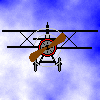
On September 12-14, 2014, the grass field outside the Waco Air Museum in Troy, Ohio was an active place as one after another, "Barnstormer" pilots of old, "Waco class" bi-wing airplans arrived from all over the country and landed for a reunion.
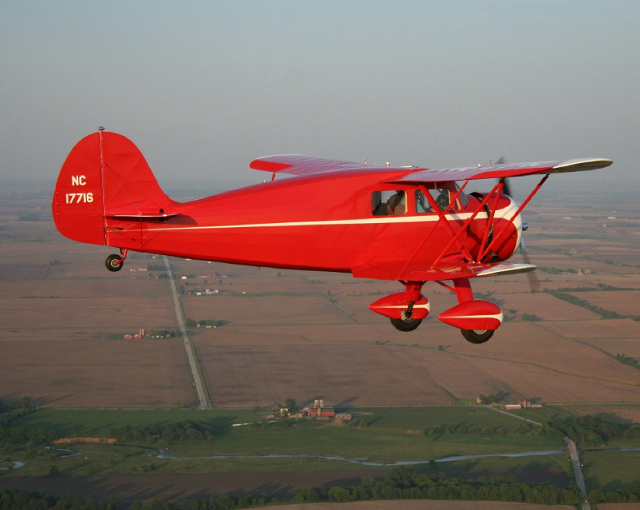
Heading for the reunion
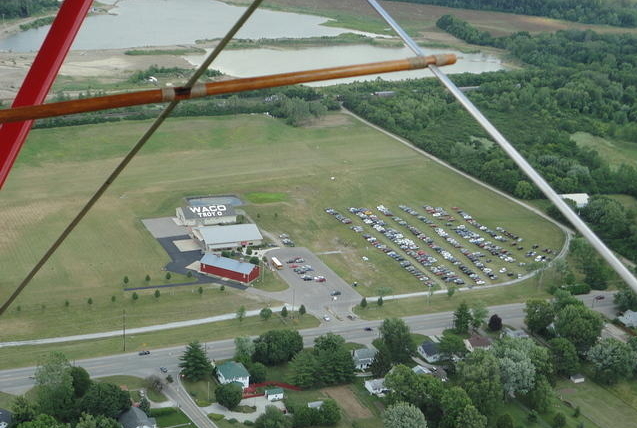
Ah! There it is!
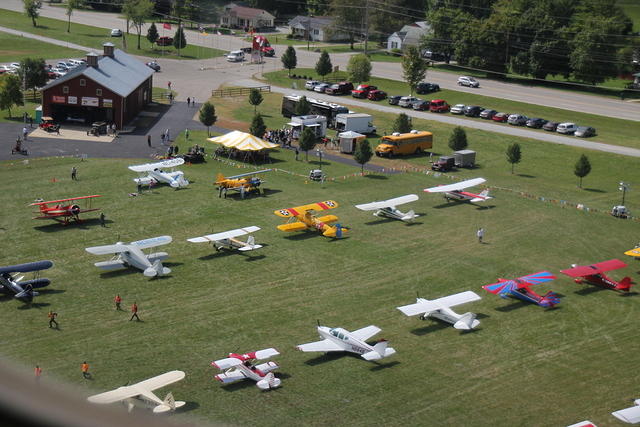
Looks like the parking lot is already full.
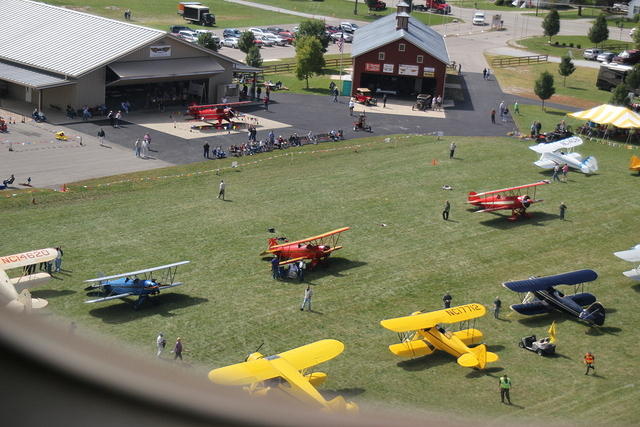
Yep - the guys are out there waiting for me.
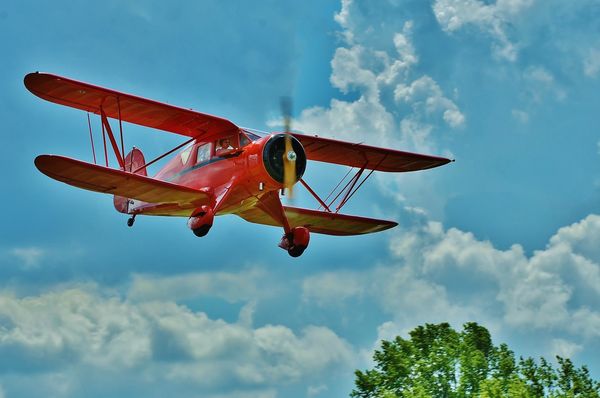
Coming in low and slow
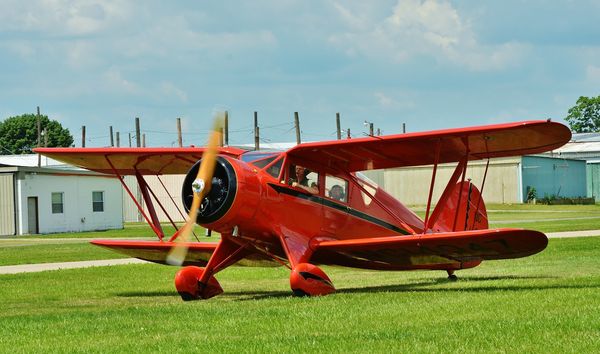
Tarmac? Tarmac? We don't need no stinking tarmac!! (*)
There is no tarmac on this airfield. They land and take off on grass. The Waco bi-wing's legs are designed as huge shock absorbers, so the pland can land in fields, even on rocky ground. (see the right side schematic, below) The versitility and safety of the Waco bi-wing was such that it was used in wartime, was used by the postal service for carrying mail, and was the first plane to be fitted with aluminum floats so it could land on and take off from water.

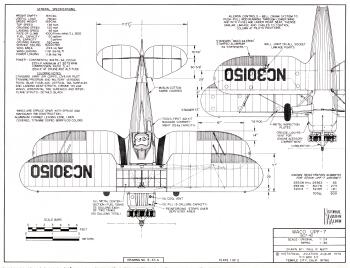
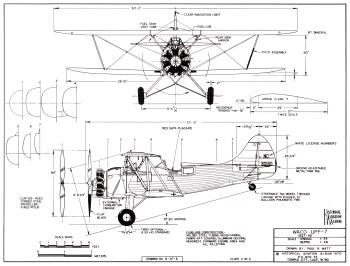
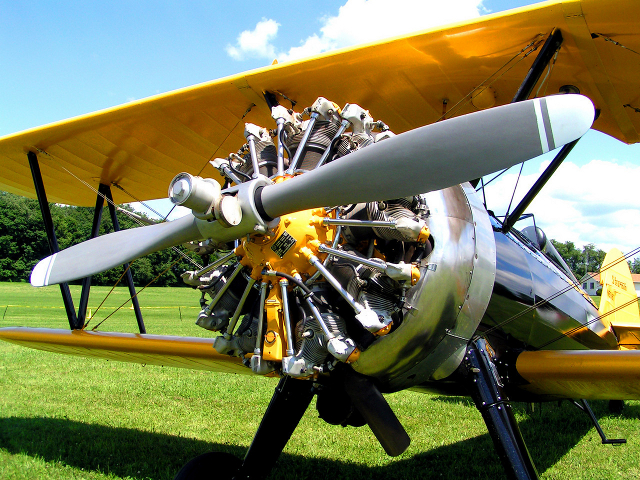
When the Waco model 9 bi-wing was new, it cost a whopping $2,500. Now, just the engine will run you $6,000 - reconditioned. The engine has 7 cylinders, arranged in a circle around the propeller shaft. The engine is able to pull the plane up to 92 miles per hour in still air, even faster in a tailwind. The two-wing design allows it to fly as slow as 33 miles per hour without falling out of the sky. Of course, any "Barnstormer" pilot worth his salt will also tell you that with a 35 mph headwind, it can stand still over a spot.
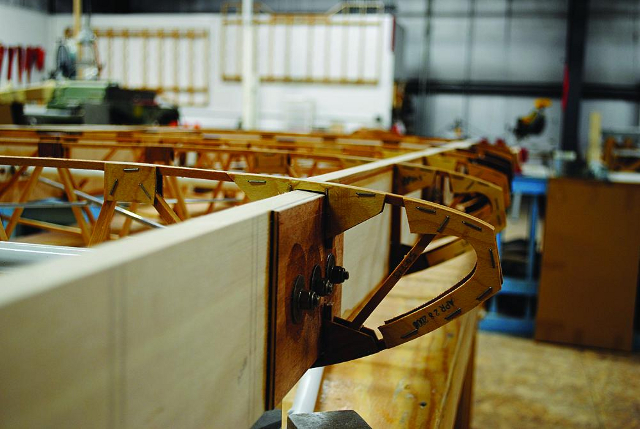
It has wooden wings
The plane's body is made of a steel pipe frame and the wings are made of wood. It is all covered with dacron fiber cloth.
"WACO" (referring to the aircraft) is usually pronounced "wah-co" (the first syllable pronounced as in "water"), not "way-co" like Waco, Texas, whose name is entirely unrelated. The name comes from a field near Troy, Ohio - Waco field, which in turn received its name from a local war-cry, which had both syllables stressed.
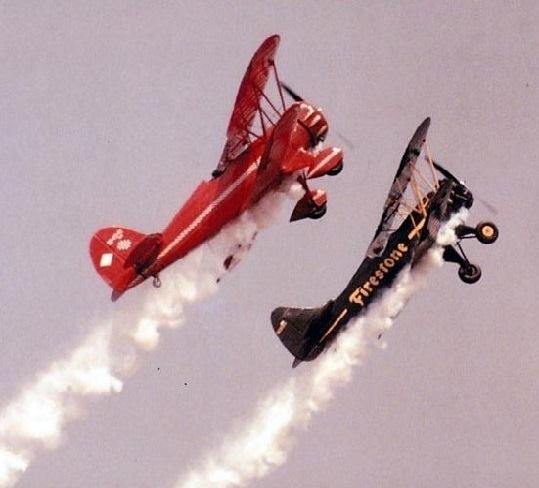
During the annual fly-in, the pilots put on air shows, races, stunts, wing-walkings, etc.
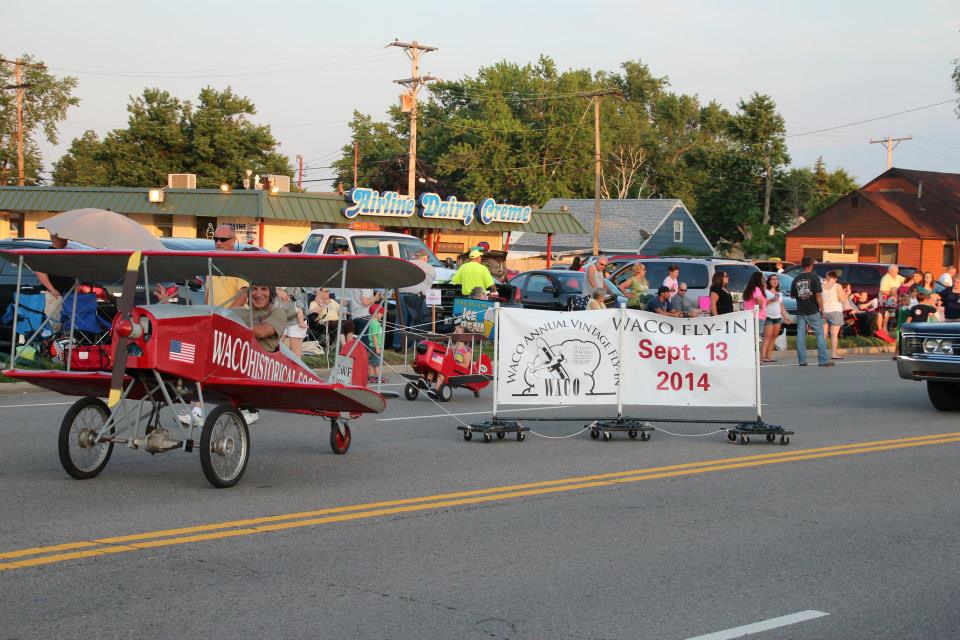
The whole town gets involved, and there is a "Waco bi-wing" parade and other special events.
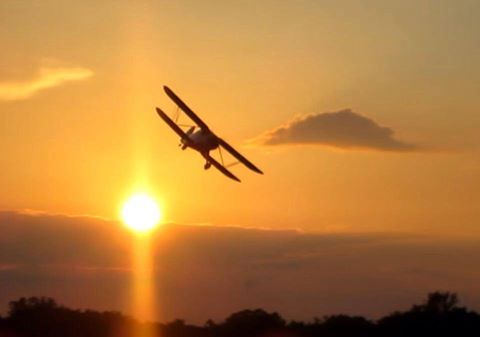
And at the end, the happy pilot flies back home with a cargo of happy memories with friends who share his love for this very special plane.
(*) "Tarmac" is slang for "runway". The word, "tarmac" is short for "tar-penetrated macadam". Macadam is a paving material that is basically a layer of ground up stone held together by a binding agent. But when tar is used as the binding agent, the macadam will get soft in the heat of Summer and the plane's wheels will sink into it, get coated with tar, and the plane can crash, even though it has already landed. So, the use of the term, "tarmac" is actually incorrect for airport runways, since the binding agent must be much stronger than tar. In fact, because of the weight of planes landing at the largest airports, the macadam must be even stronger than that used for truck-bearing highways. That is not a problem for these Waco bi-wing planes, though, since they can land even on rough ground.FEEDBACK MAP
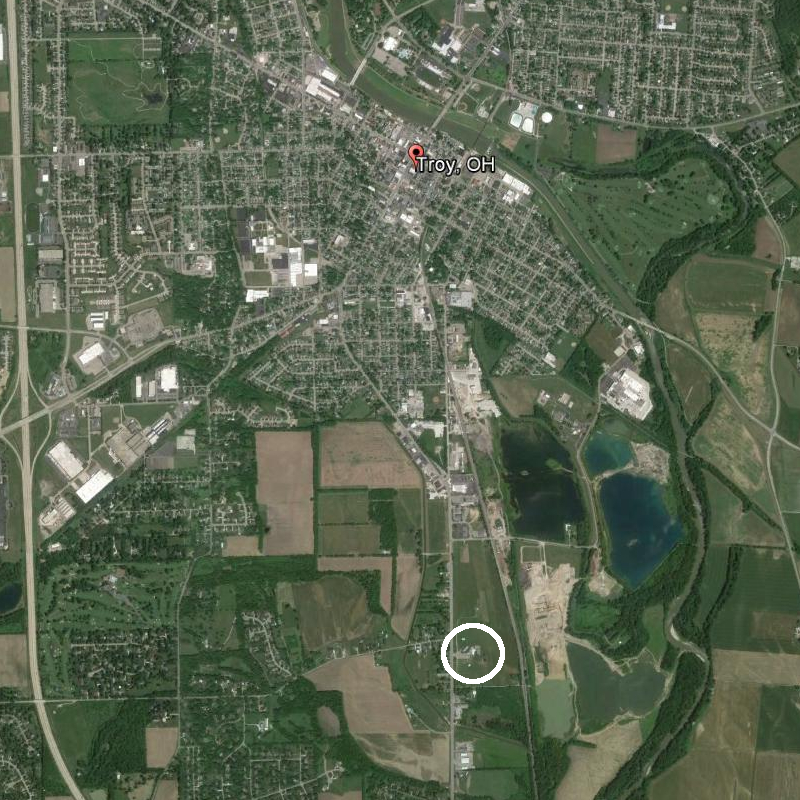
If you got impressions for which this feedback is insufficient, more information,
pictures and videos can be found at the following web sites:
Flying Magazine web site
Mark Spearman Photography's Waco gallery
Wikipedia - Waco plane characteristics & stats
Aviation History web site - diagrams
National Waco Club's Facebook page
Waco Historical Society's Facebook page
Downloadable .pdf of Waco plane manufacture